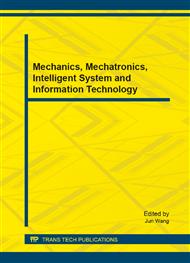p.199
p.205
p.209
p.216
p.221
p.225
p.229
p.233
p.241
Efficient Electronic Seal System
Abstract:
This paper proposed an efficient electronic seal system based on Near Field Communication (NFC), which utilized by NFC mobile phone, RSA encryption, authentication and anti-counterfeiting validation. The system has the advantages of high security and low cost. In addition, the whole process of logistics could be supervised without special equipment. These lay a solid foundation for “release through” supervision of agricultural products supplied to Hong Kong.
Info:
Periodical:
Pages:
221-224
Citation:
Online since:
August 2014
Authors:
Keywords:
Price:
Сopyright:
© 2014 Trans Tech Publications Ltd. All Rights Reserved
Share:
Citation:


